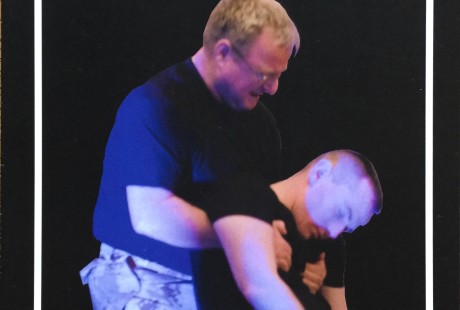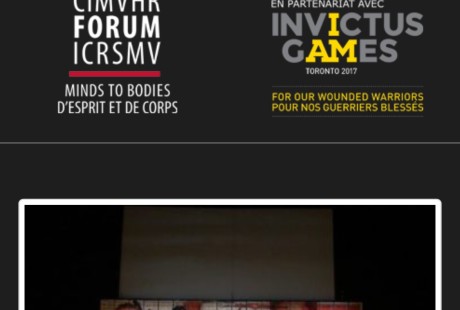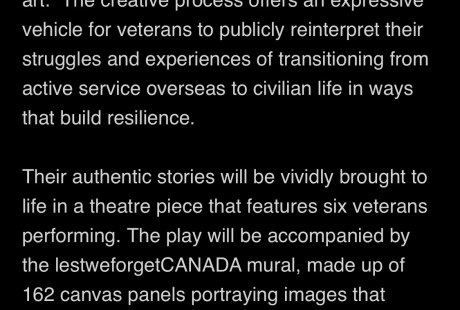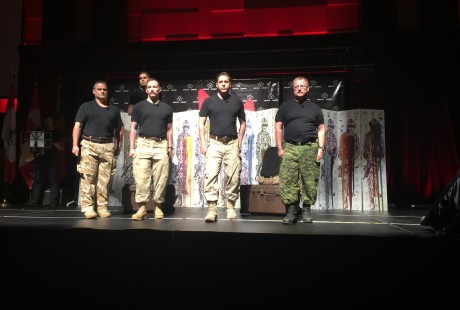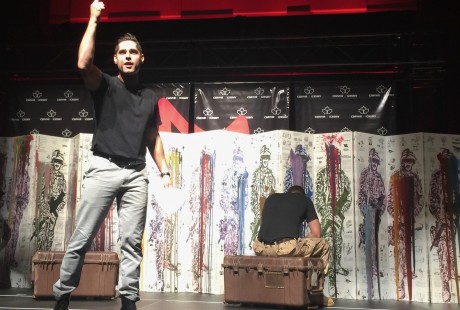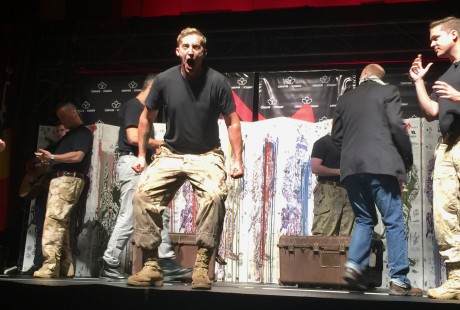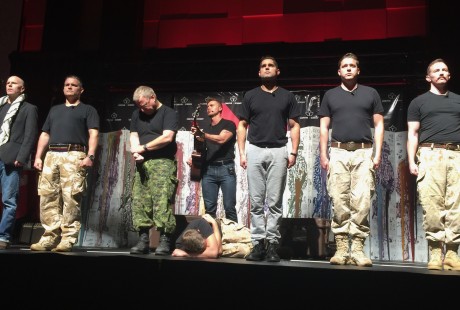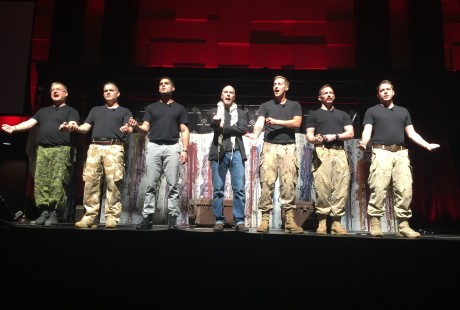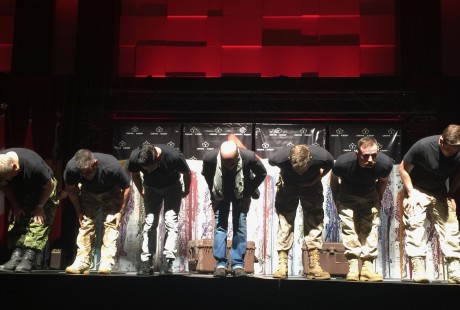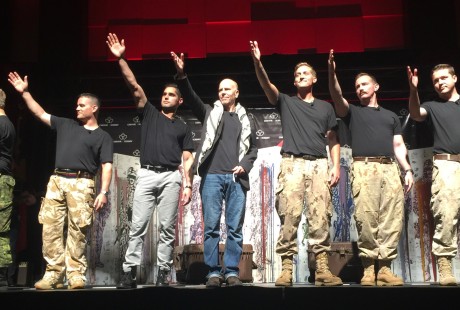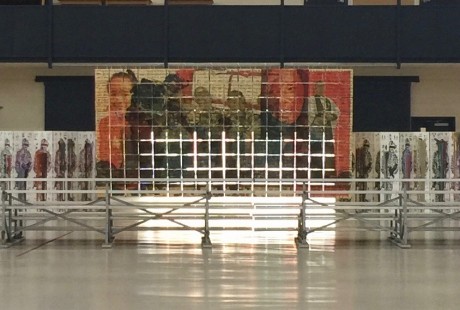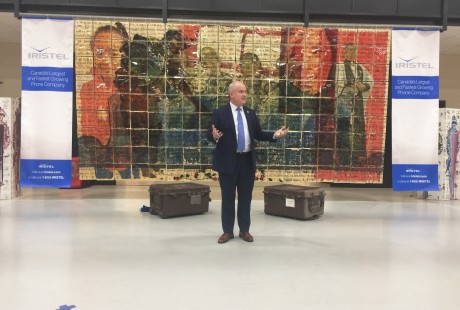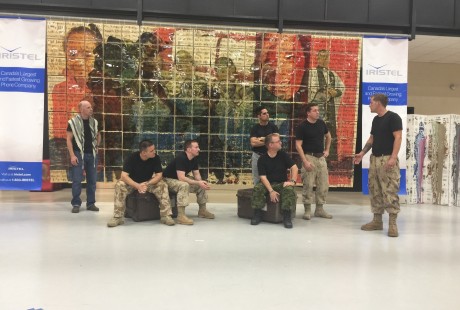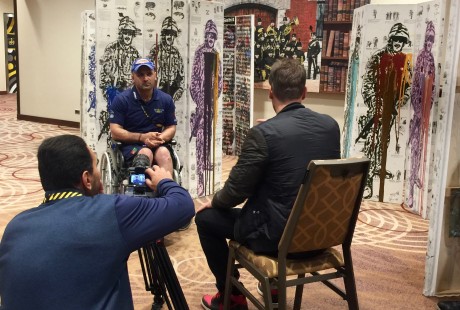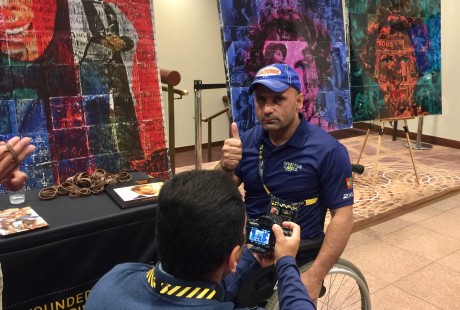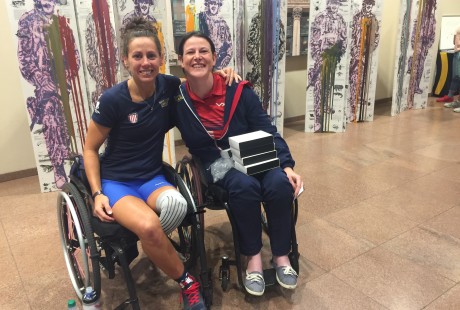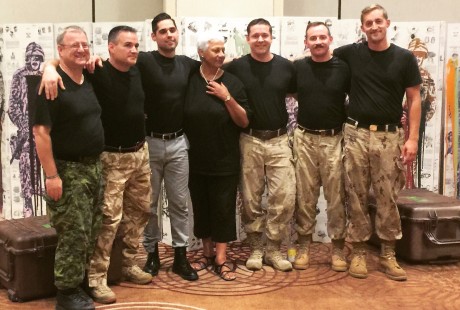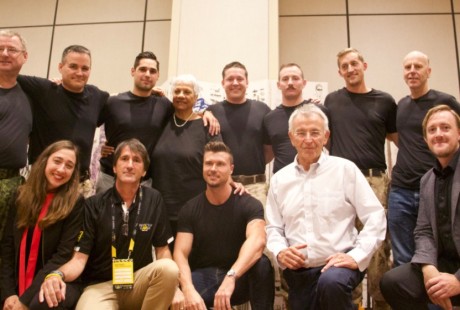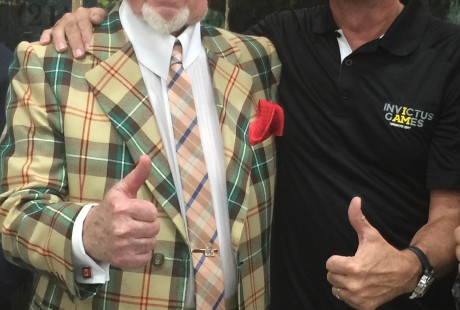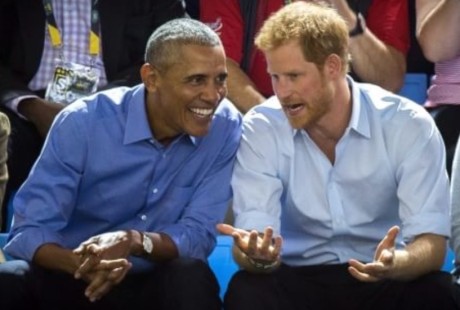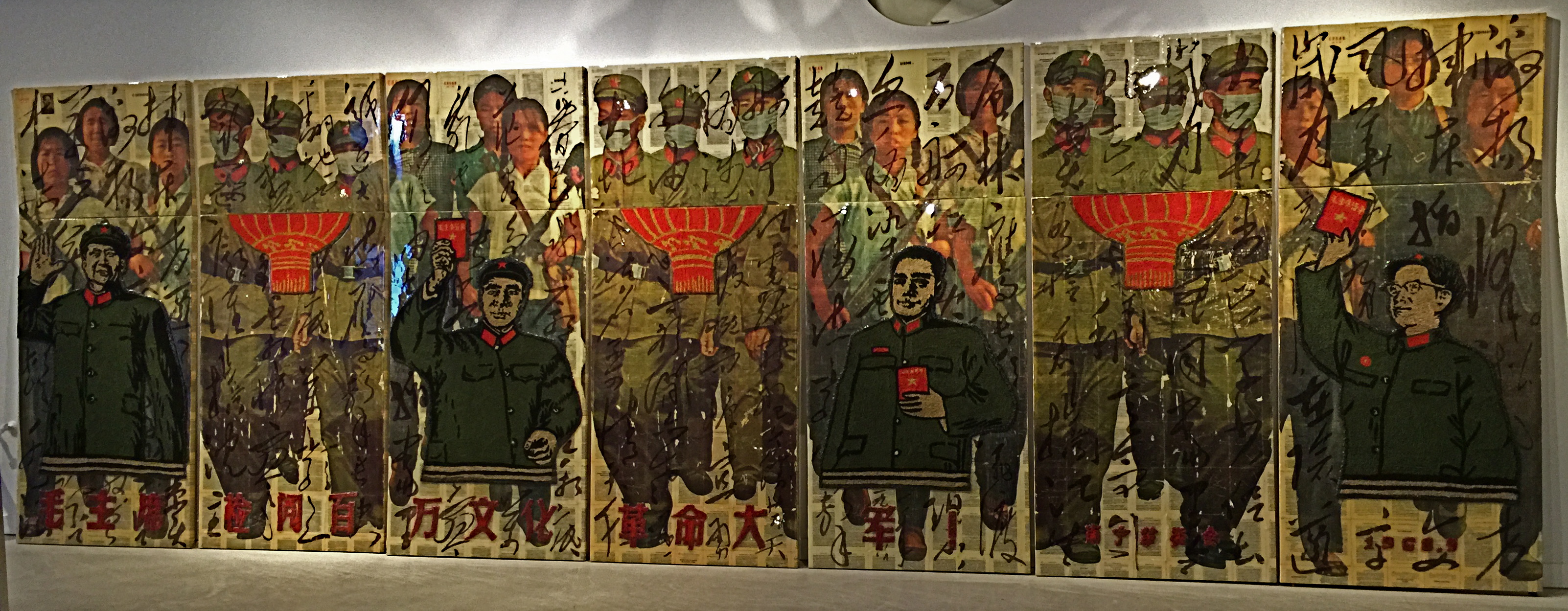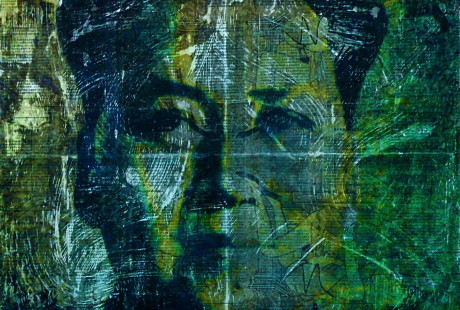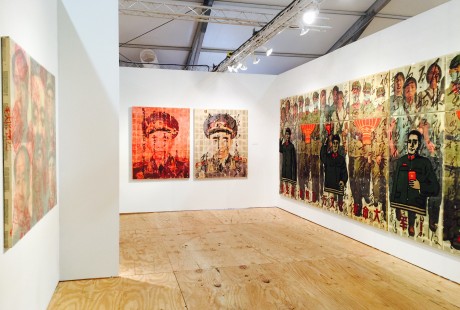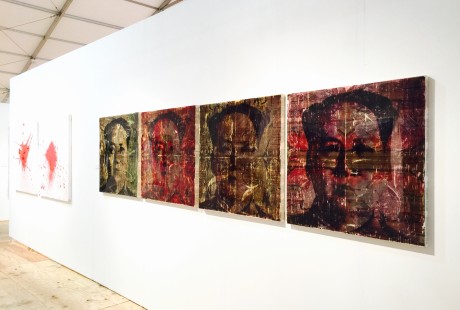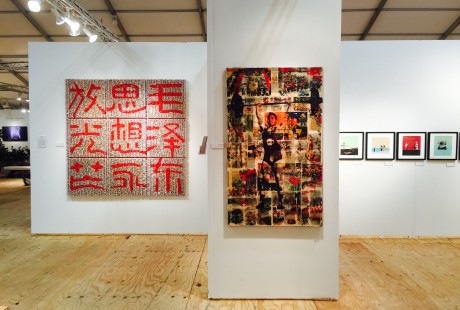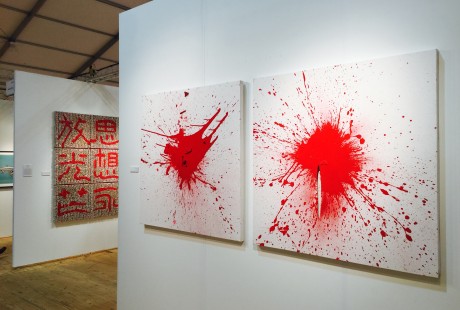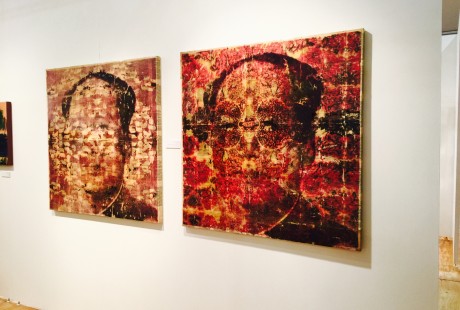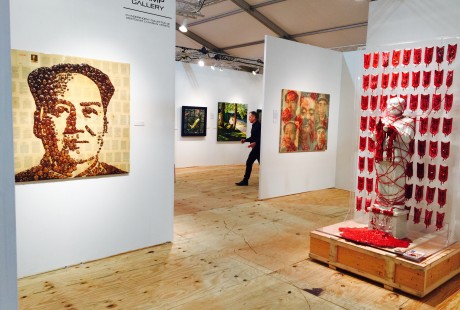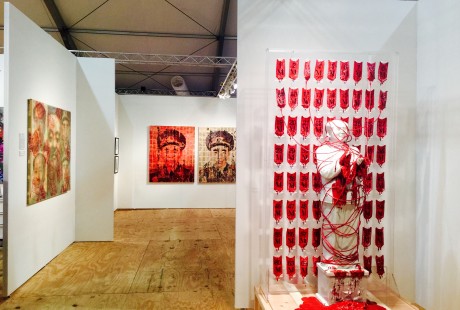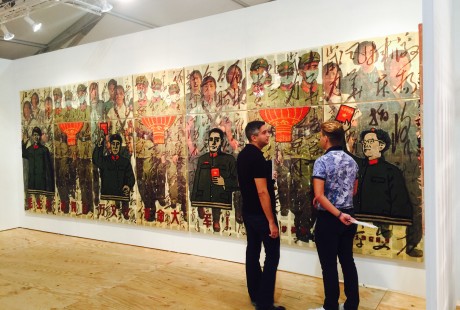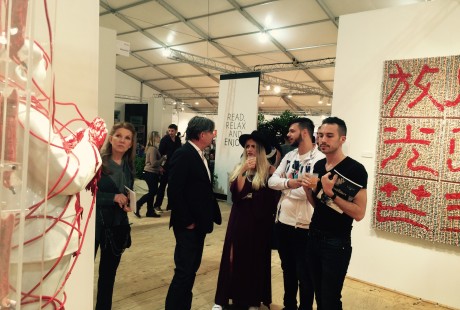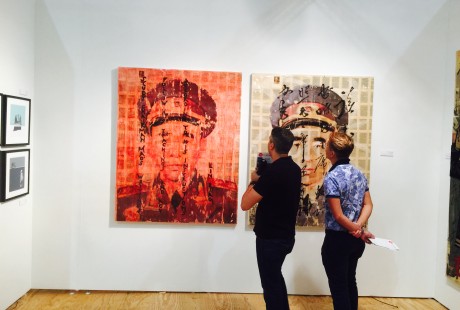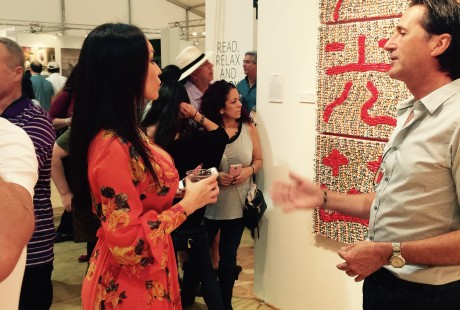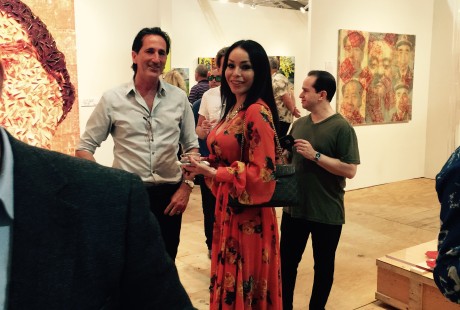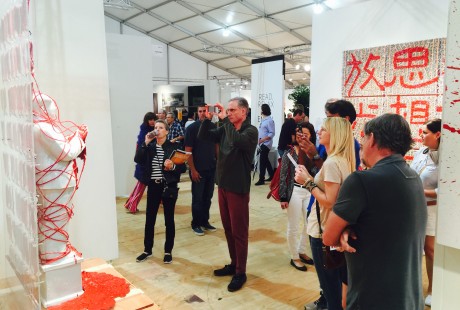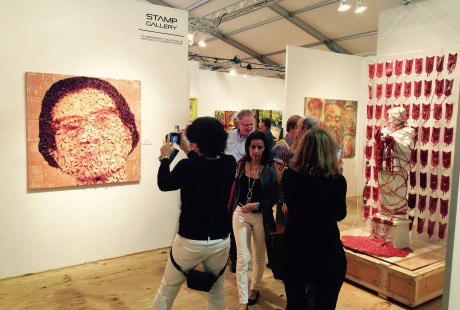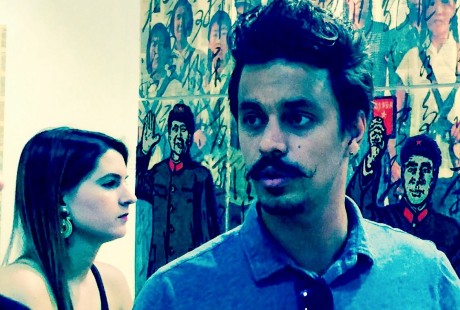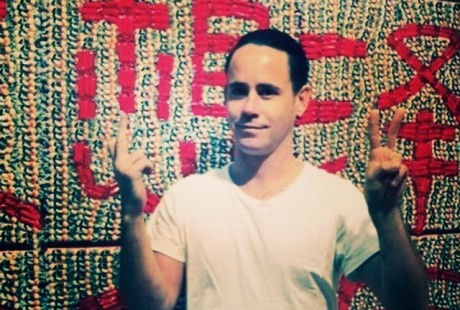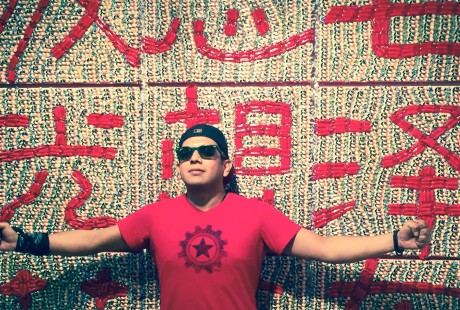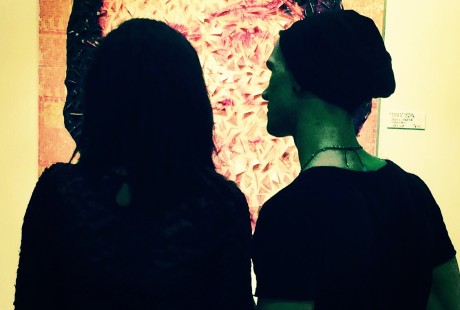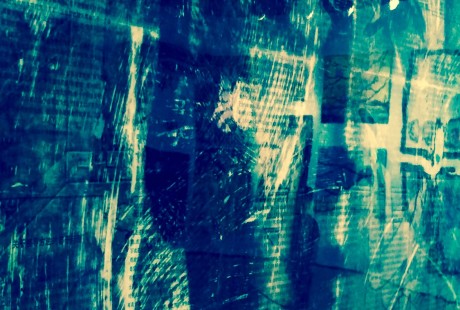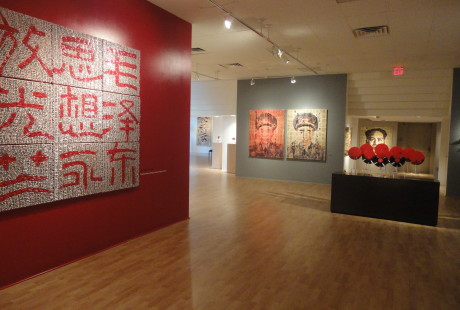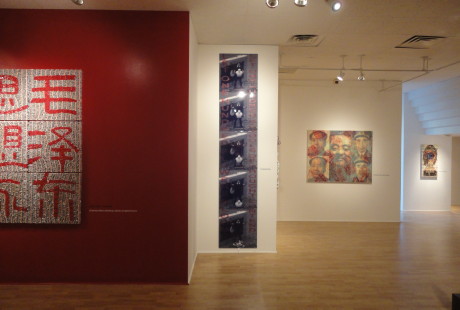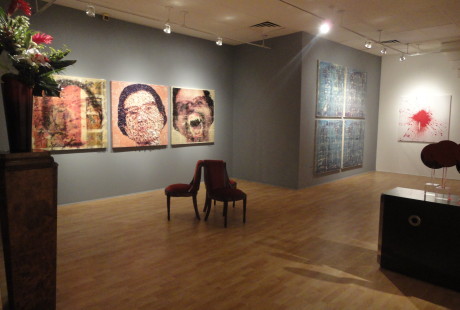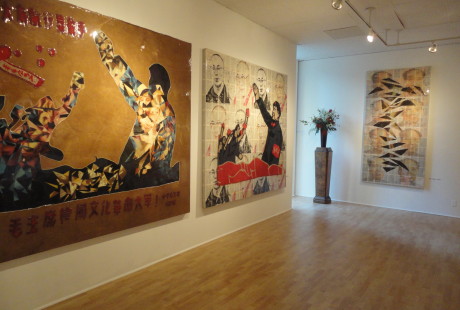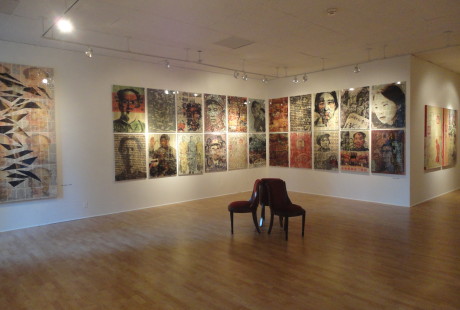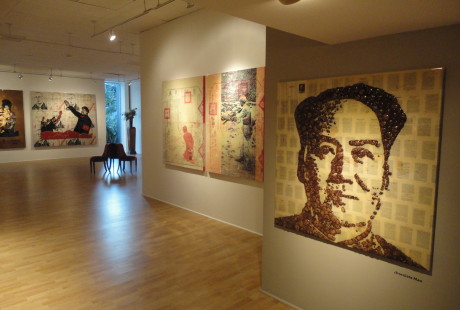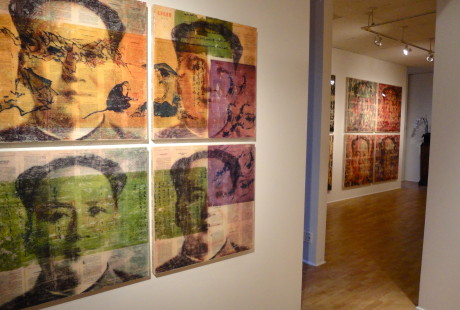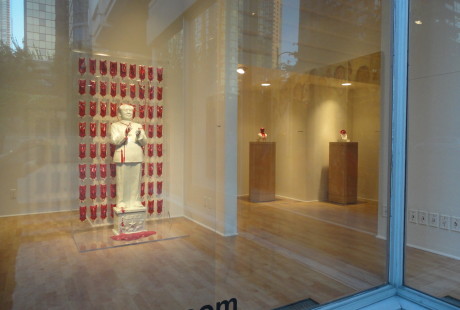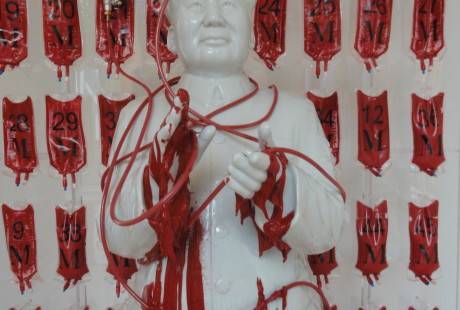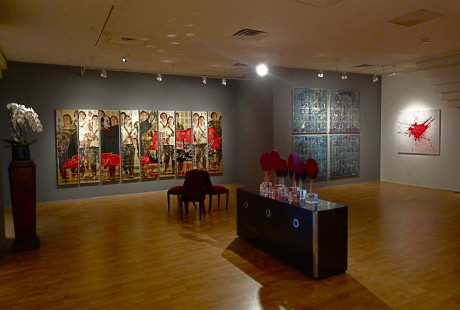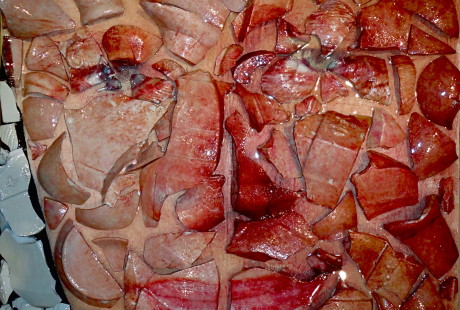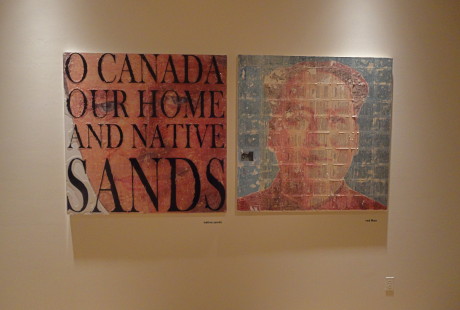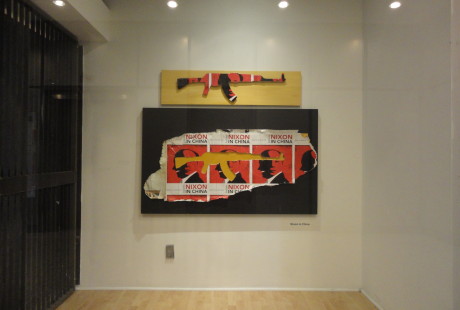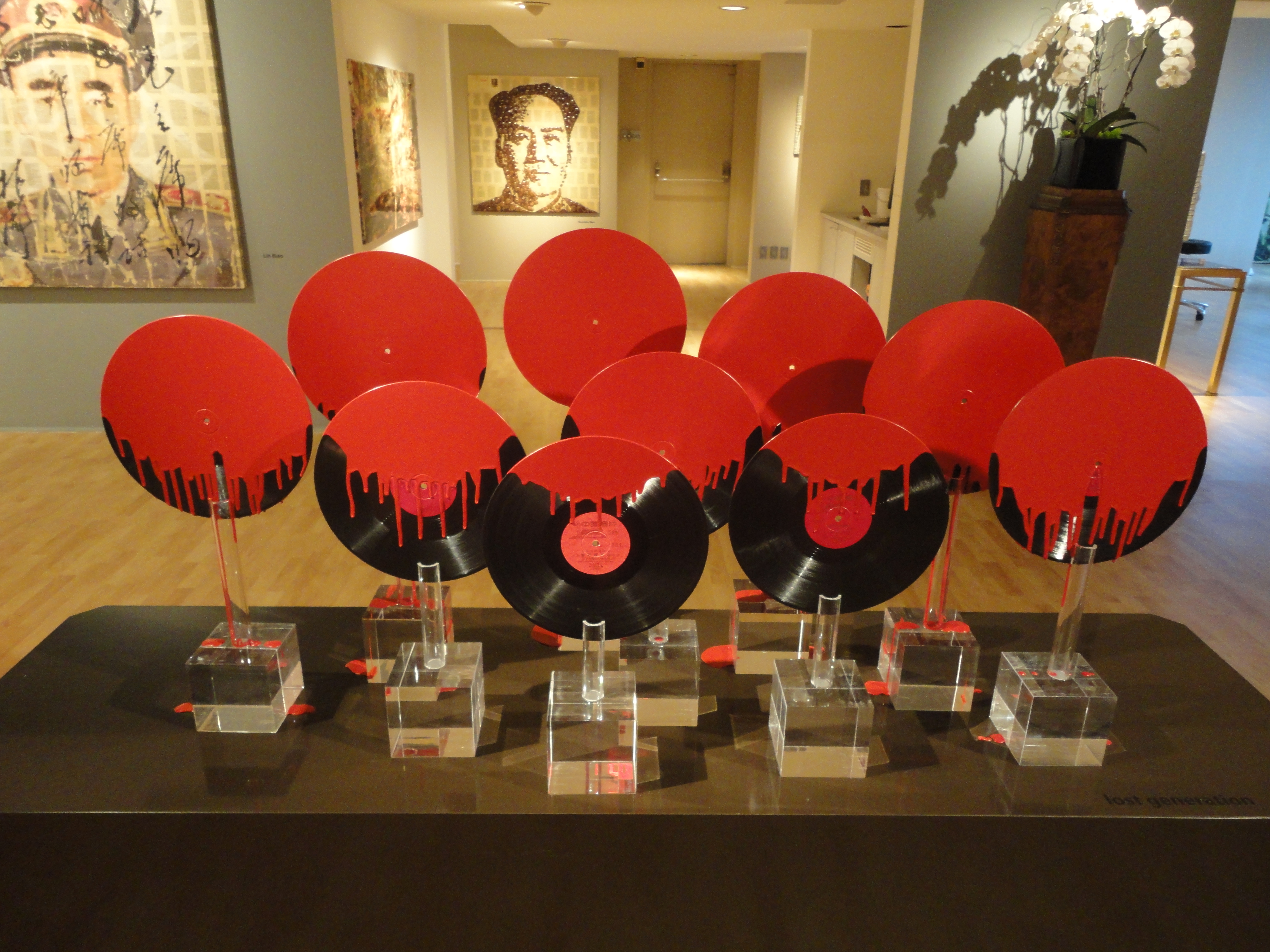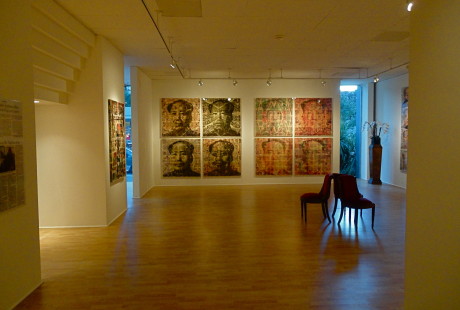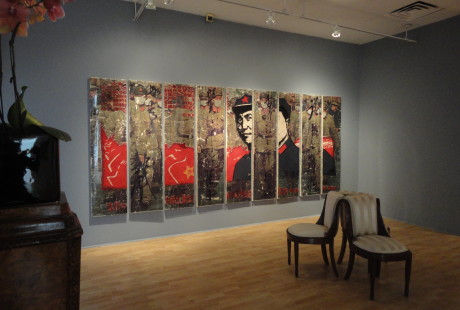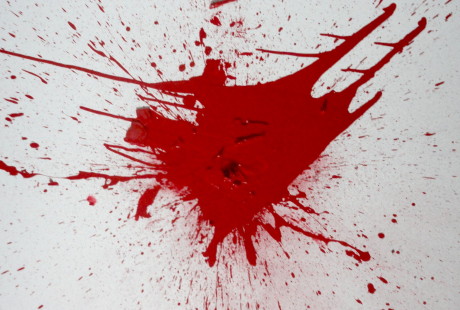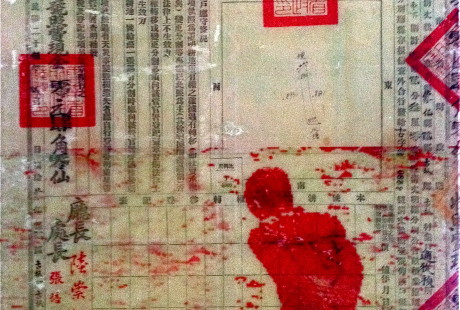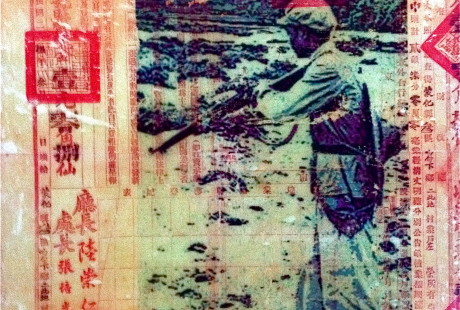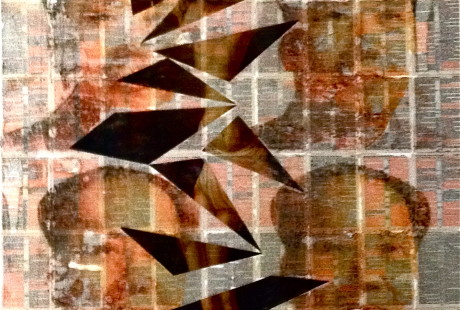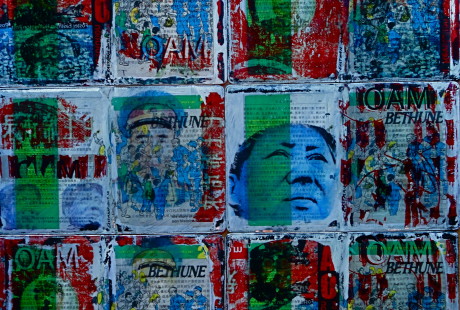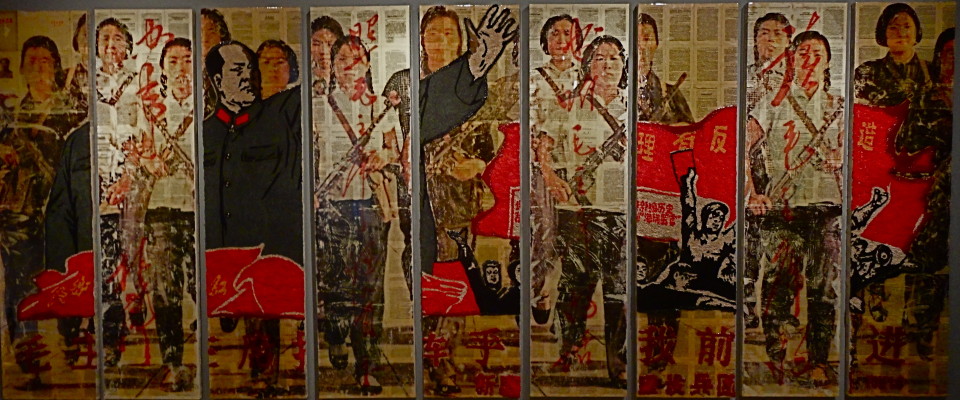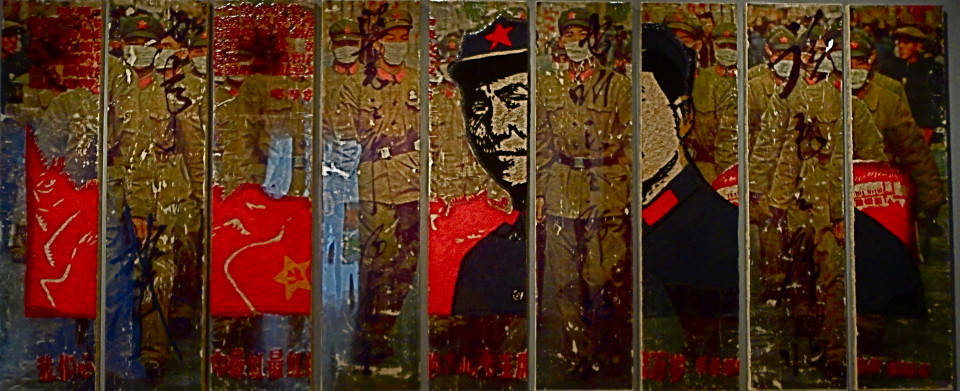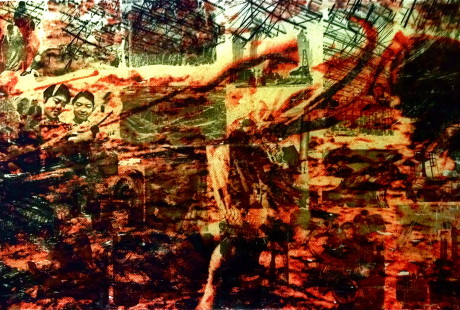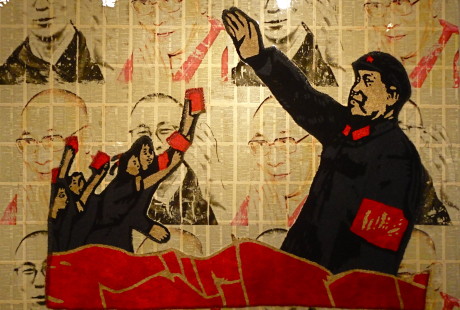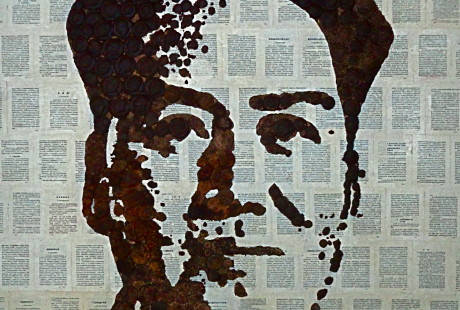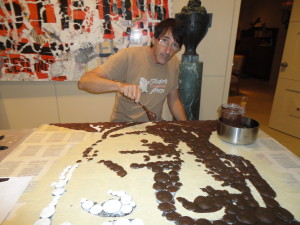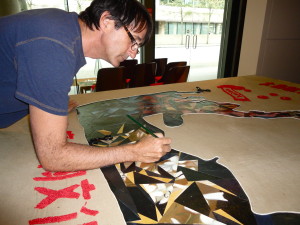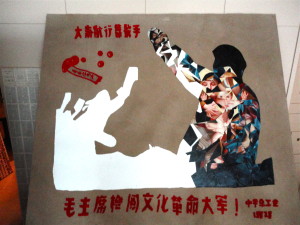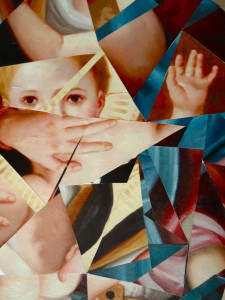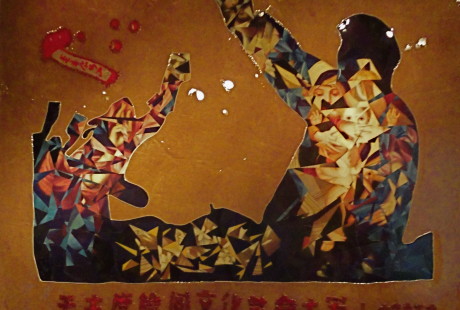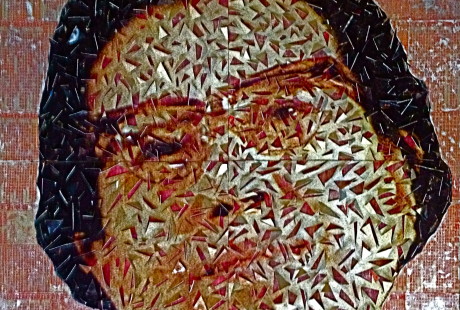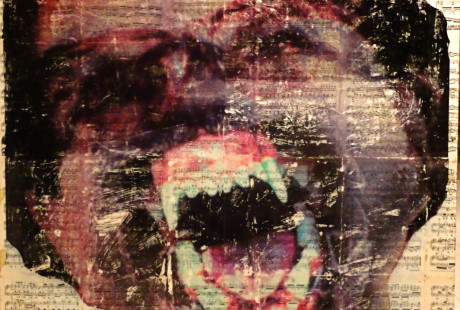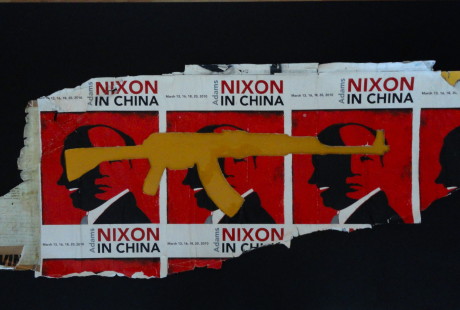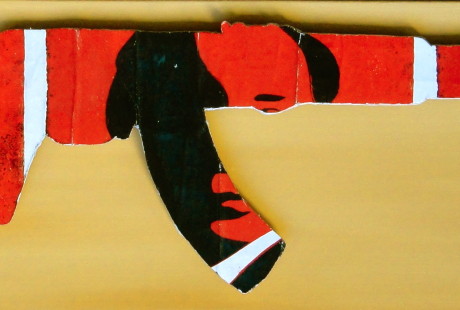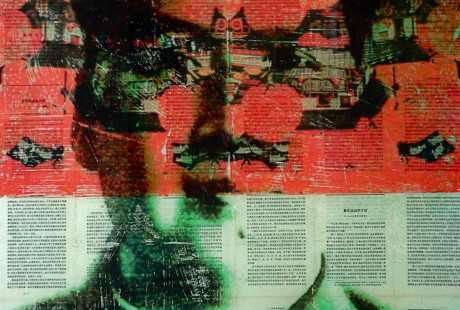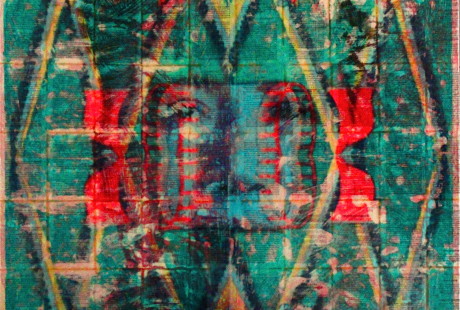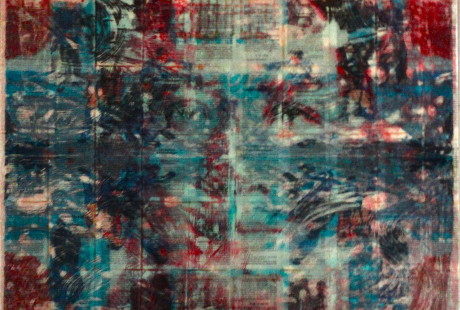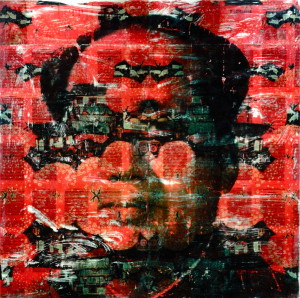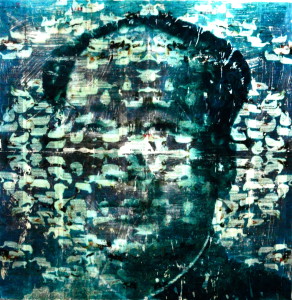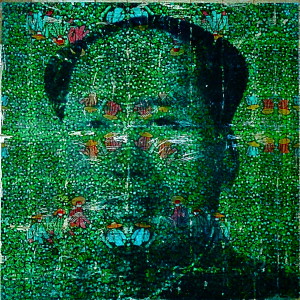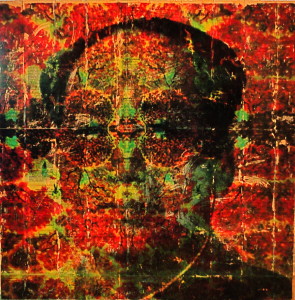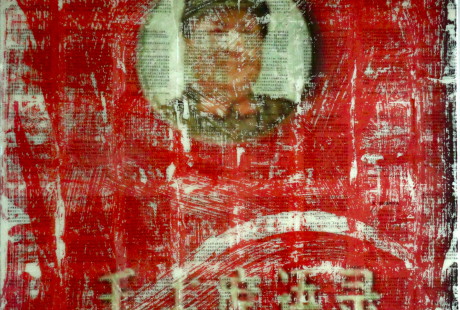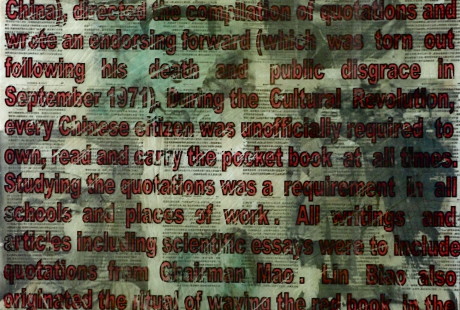art
MAO : Dalai Lama and Mao
On 23, Nov 2015 | In b) MAO works | By foster eastman
Two images of the Dalai Lama, the younger when he went into exile in 1959 and a current photo transferred onto old testament pages of Foster’s grandfather’s (Foster Eastman) bible.
Chairman Mao with Red Guards from an original banner from the Cultural Revolution.
MAO : The Great Leap Forward:Weight Lifter
On 23, Nov 2015 | In b) MAO works | By foster eastman
The image of the weightlifter is transferred onto 2 image transfers of peasant paintings from the 1960s. This represents citizens working together to build a strong China. However, during this period, 30 million Chinese citizens died of starvation.
MAO : chocolate Mao
On 23, Nov 2015 | In b) MAO works | By foster eastman
Chocolate Mao symbolizes the exposure and relationship of political science versus childhood experiences in China during Mao’s reign. Mao pins have been created with plaster of paris from molds taken from vintage Mao pins from the Cultural Revolution. They were then covered with chocolate and sealed with resin… 48X48 on board
MAO : IV power
On 23, Nov 2015 | In b) MAO works | By foster eastman
Each bag symbolizes 1 million drops of blood representing the approximately 72 million citizens who died during Mao’s reign from starvation, beatings/executions, overwork and suicide. These drops are slowly building a monument to these ‘never spoken about’ deaths… the largest democide ever recorded in history. Are we going to just forget about these people?
This performance installation also references Chairman Mao’s refusal for Chou En Lai to receive medical treatment for cancer.
It also makes reference to Ai Wei Wei’s surgery in 2009 to remove fluid on the brain while installing an exhibit in Munich… the result of a beating from Chinese Authorities.
MAO : no more Jesus speak
On 23, Nov 2015 | In b) MAO works | By foster eastman
During the Cultural Revolution, all religions were banned and many churches and monasteries were ransacked or destroyed. These classic religious paintings were destroyed to create a stained glass effect with a completely different message mounted onto the cut out portion of an original Cultural Revolution banner dated 1967.8.
MAO : death by 1000 cuts
On 23, Nov 2015 | In b) MAO works | By foster eastman
Jiang Qing was an amazing orator and would work red guards into a frenzy screaming ‘death by a 1000 cuts… down with Lui Shaoqi’. This was an ancient Chinese method of torture and execution. Jiang Qing’s image has been transfered onto pages of a 1958 Chinese Almanac. This book was banned during the Cultural Revolution due to it’s superstitious content. The image has been cut 1000 times.
MAO : Mao’s dog
On 23, Nov 2015 | In b) MAO works | By foster eastman
At her trial in 1981, Jiang Qing defiantly declared, “I was Chairman Mao’s dog. I bit whomever he asked me to bite”. These images were transfered onto pages of Beethoven Sonatas, western music that was banned during the Cultural Revolution
MAO : Mao and Richard’s AK 47
On 23, Nov 2015 | In b) MAO works | By foster eastman
The juxtaposition between guerrilla advertising and guerrilla warfare.
Mao Tse-tung
On 23, Nov 2015 | In c) MAO book of | By foster eastman
Mao Tse-tung (1893-1976) was a Chinese Communist revolutionary, guerrilla warfare strategist, anti-imperialist, political philosopher and leader of the Chinese Revolution. He was the architect and founding father of the People’s Republic of China established in 1949 after defeating Chiang Kai-shek’s Nationalist government during the Chinese Civil War. Mao enacted sweeping land reforms by using violence and terror to overthrow the feudal landlords and warlords. National campaigns for rapid industrialization such as the Great Leap Forward resulted in severe starvation. Anti-rightist movements and struggle sessions led to humiliation, beatings, suicides and executions. The Cultural Revolution damaged the historical culture of China by destroying ancient relics and religious sites in an effort to modernize the consciousness of the nation. Under Mao’s leadership positive changes included promoting the status of women by abolishing foot binding, arranged marriages, polygamy and allowing women to divorce. Literacy improved from 20% to 93% and life expectancy rose from 35 to 55 increasing China’s population dramatically. Corruption was wiped out and the restructuring of feudal and Confucius ideologies ensured China’s sovereignty and status as a major power on the international stage. Mao is credited for laying a foundation for China’s continued development and was named one of the 100 most influential people of the 20th century by Time Magazine. While his rule is believed to have caused the deaths of 40-70 million people, he remains a controversial figure with a contentious legacy that is subject to revision and fierce debate.
- Mao Tse-tung
Quotations from Mao Tse-tung
On 23, Nov 2015 | In c) MAO book of | By foster eastman
Quotations from Chairman Mao Tse-tung (Zedong) is a series of statements from speeches and writings by Mao bound in a bright red vinyl cover commonly known as ‘the little red book’. Marshal Lin Biao (Vice Premier of the Peoples Republic of China), directed the compilation of quotations and wrote an endorsing forward ‘study Chairman Maos writings, follow his teachings and act according to his instructions’. (This page was torn out following his death and public disgrace in September 1971). During the Cultural Revolution, every Chinese citizen was unofficially required to own, read and carry the pocket book at all times. Studying the quotations was a requirement in all schools and places of work. All writings and articles including scientific essays were to include quotations from Chairman Mao. Lin Biao also originated the ritual of waving the red book in the right hand by the Red Guards chanting slogans such as “long live the proletariat” promoting Mao’s cult of personality. The ‘little red book’ became a symbol of Mao Tse-tung thought or Maoism and is one of the most printed books in history.

